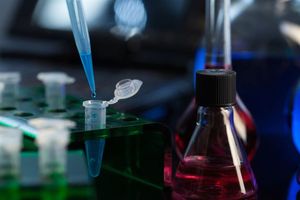(BPT) - Sponsored by Boston Scientific
Male incontinence, also known as bladder leakage, may stop men from doing activities they once enjoyed for fear of embarrassment. While this can feel isolating, the truth is that incontinence is a common condition and impacts about 1 in 10 men in the U.S.1
Stress urinary incontinence (SUI) occurs when physical movement or activity - such as coughing, laughing, sneezing or heavy lifting - puts pressure or stress on the bladder, causing urine to leak.2,3
Want to learn more? Here are some frequently asked questions about SUI:
Is stress urinary incontinence a problem for men?
Rates of urinary incontinence continue to rise, particularly in men 60 years or older.1 A common cause of SUI in men is the surgical removal of the prostate gland to treat prostate cancer, or a prostatectomy.3 When the urinary sphincter muscle is damaged or weakened, it cannot squeeze and stop urine from flowing out of the body when you laugh, lift, walk or move.2,3
While incontinence becomes more common as men age, it shouldn't be ignored.1 Bladder leakage could be a sign of brain or nerve issues, dementia or other health problems that make it hard to feel and respond to the urge to urinate. Sometimes it's due to problems with the urinary system itself.4
Can urinary incontinence be prevented?
Though it might not be completely preventable, you can lessen your chances of developing SUI. Managing your weight through a healthy diet and exercising regularly - including doing kegels - is a good way to help address SUI.4
Will drinking less water decrease leakage?
Drinking normal amounts of water does not exacerbate the problem of incontinence. On the contrary, it improves overall bladder health and helps your body work as optimally as possible.5
If I have surgery for prostate cancer, is incontinence an unavoidable side effect?
Bladder leakage is a common side effect for men who undergo a prostatectomy, however, SUI is sometimes resolved within one year following the procedure. If you find bladder control to still be an issue six months after your procedure, don't be afraid to see a specialist to discuss your options.6
Are adult diapers my only option for managing incontinence? Are there longer-lasting treatments?
Many men start managing their bladder leakage with products they can buy at pharmacies or grocery stores, such as pads and diapers.
However, if this approach doesn't produce wanted results, there are other treatment options that your doctor can recommend, such as catheters, penile clamps, male slings or an artificial urinary sphincter (AUS).
One example of an AUS is the AMS 800™. This three-part system allows users, when they need to urinate, to squeeze and release the pump in the scrotum several times, removing fluid from the cuff and pushing it into a balloon. When the cuff is empty, urine can flow out of the bladder. After a few minutes, the cuff automatically refills with the fluid stored in the balloon, which squeezes the urethra shut again.
Talk to your doctor about your symptoms and ask about available treatment options. To learn more, visit fixincontinence.com.
Important Risk Information: As with any medical procedure, complications may occur. The AMS 800 requires manual dexterity. Some risks with AMS 800 include but are not limited to: device malfunction or failure which may require revision surgery, erosion of the urethra in the cuff area, urinary retention, post-operative pain and infection. Find a link to additional patient safety information at fixincontinence.com.
Caution: U.S. federal law restricts this device to sale by or on the order of a physician. This material is for informational purposes only and not meant for medical diagnosis. This information does not constitute medical or legal advice, and Boston Scientific makes no representation regarding the medical benefits included in this information. Boston Scientific strongly recommends that you consult with your physician on all matters pertaining to your health.
References
1. Markland AD, Goode PS, Redden DT, et al. Prevalence of urinary incontinence in men: results from the national health and nutrition examination survey. J Urol. 2010 Sep;184(3):1022-7.
2. Abrams P, Andersson KE, Birder L, et al. Fourth International Consultation on Incontinence Recommendations of the International Scientific Committee: Evaluation and treatment of urinary incontinence, pelvic organ prolapse, and fecal incontinence. Neurology and Urodynamics. 2010;29:213-240.
3. Stress Incontinence. Mayo Clinic Website. http://www.mayoclinic.org/diseases-conditions/stress-incontinence/basics/definition/con-20027722. Accessed July 2024.
4. 'Urinary Incontinence - What to Ask Your Doctor.' Mount Sinai Health System, www.mountsinai.org/health-library/questions-to-ask-your-doctor/urinary-incontinence-what-to-ask-your-doctor.
5. 'Does Drinking More Water Help Incontinence?' UC Irvine Health, Department of Urology. www.urology.uci.edu/does_drinking_more_water_help_incontinence_can_drinking_too_much_water_irritate_your_bladder_does_drinking_water_help_with_overactive_bladder.shtml.
6. Sandhu JS, Breyer B, Comiter C, Eastham JA, Gomez C, Kirages DJ, et al. Incontinence after Prostate Treatment: AUA/SUFU Guideline. Journal of Urology [Internet]. 2019 Aug 1; 202(2):369-78. Available from: https://doi.org/10.1097/JU.0000000000000314






